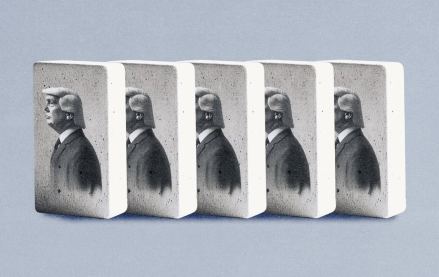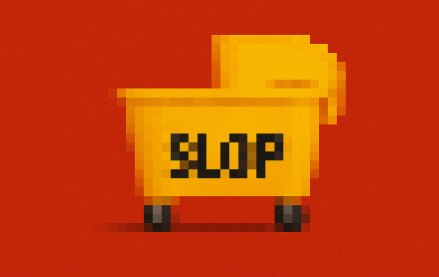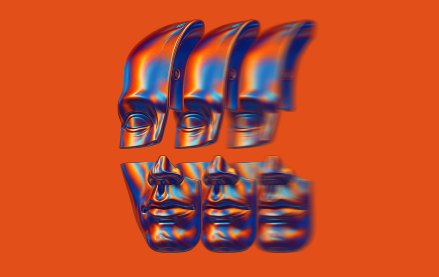Save 50% on a 3-month Digiday+ membership. Ends Dec 12.
Why creator Bashel Lewis ditched a five-year corporate career for the full-time creator grind

It started with a standing desk and a Beyoncé lip sync.
That was the viral video Bashel Lewis posted to his TikTok account in April that got him thinking about leaving his full time marketing gig at Nielsen to become a content creator.
“Everyone from Universal to Hulu to every brand you could think — Mama Tina [Tina Knowles], Gayle King, CBS posted this stuff,” said Lewis, a New York City based lifestyle and comedy content creator, referring to the people who engaged with the video.
That video has since racked up more than 7.3 million views on TikTok and Lewis has since left Nielsen after five years with the company, to pursue content creation full time. This year, he’s worked with brands like Thayers skincare, Away luggage brand, Axe grooming products, Walmart, Task Rabbit and Kind snack bars. Nielsen has clear conflict of interest guidelines for employees, per a company spokesperson.
Since going full-time last month, Lewis has approached the work like a media company, hosting events and appearing on panels — in addition to his content creation.
Advertisers are pumping billions into the creator economy — $37 billion this year, according to the Interactive Advertising Bureau (IAB). Increasingly, creators like Lewis are looking to carve out a bigger piece of the pie themselves.
But entrepreneurship doesn’t come without challenges. Lewis is navigating taxes, health insurance and contracts by himself. Something not every influencer has been able to do. Digiday recently caught up with Lewis to hear what it takes to become and sustain a career as a full-time content creator.
This interview has been lightly edited for clarity.
What was the indicator for you that you were ready to make that jump into content creation full time, leaving corporate America behind?
It was really a conflict of interest. I was getting booked for the stages they were paying to be on. So I chose myself in the long run. And what made me feel confident in that decision was one, I was getting enough brand deals to do it, and then, two, I had enough relationships in the industry to make me feel like I could call on someone if I needed to.
What was the cost analysis that you did in your head about walking away?
More than the cost, it was my mental health and off of one brand deal, I can make what I make in a month. If I put this amount of effort into what I’m doing 9-to-5 and I’ve got this time, then if I just secure even my base rent, if I secure this much a quarter, then I feel like this is enough for me to feel comfortable with walking out and doing this on my own.
I will be honest. I have a 401K that I did over the five years that I was there, but I have not thought about the retirement plan yet. It’s only been a month. It’s something that I should definitely [consider], but I’m still trying to think about taxes. Taxes is the thing that scares me the most about being a full-time creator — an LLC and all things.
When you left being a full-time employee to be a full-time creator, did you build a team around you to help you with these things?
I’m navigating by myself. I had left my agency, as well, that was helping me, because they were only a social agency, and I realized I needed more of a full service agency — one that would help me with finances, one that could help me figure out the best healthcare resources and all that stuff. Then also, I look to a lot of my counterparts, people who have been doing consecration full time. I look to them and reach out and say, “Hey, how are you doing this? How are you navigating this? What healthcare do you have? How did you manage this financially?” That’s what I’m starting to do.
In full transparency, this morning, I signed my biggest deal by myself [with a beauty brand]. It’s a long term partnership with the brand that pays six months of my rent — six months of my expenses. Being a creator, the scale is unlimited if you really do invest your time and the energy that you were putting into that nine to five into this.
What’s your networking style? How do you land your next deal, get in front of brands?
Out of the 10 or 12 things I’ve hosted, moderated, this conference season, I’ve only got paid for two of those things. We’re talking about big galas with 500 people, 600 people — only two of those things I got paid for. That’s because every time I leave those events, I come away with three brand deals and a whole bunch of people that I can network with.
Going from a corporate 9-to-5 to entrepreneurship is a big jump. How do you manage your days as a full-time creator?
Since I’ve been doing this for a month and a half, it’s been conference season. Every other day, I’m booked for two things a week. I’m preparing, doing my research about the panel or preparing what things I’m going to do to bring to the stage. Thankfully, the schedule has naturally created itself. Now that I’m in this season where conference season is not happening anymore, I’m making my schedule around: if I want to create this show, here’s the planning stage. I’m dedicating two hours to doing this, and then I need to make some content for this. I’m also having a lot of chats with people. So my schedule is being filled up with nurturing [sources], finding leads, creating content, and then future planning content as well.
More in Marketing

How Costco stood against Trump’s agenda on tariffs, DEI this year
Costco has continuously been held up as an example of a company that has stood firm in its willingness to do what it believes is best for the business.

Brands look to experiential marketing as antidote to AI slop, digital fatigue
Brands are prioritizing experiential and IRL marketing as an antidote to ‘AI slop’ and digital fatigue.

Agencies push curation upstream, reclaiming control of the programmatic bidstream
Curation spent much of this year in a fog, loosely defined and inconsistently applied. Agencies say they plan to tighten the screws in 2026.









